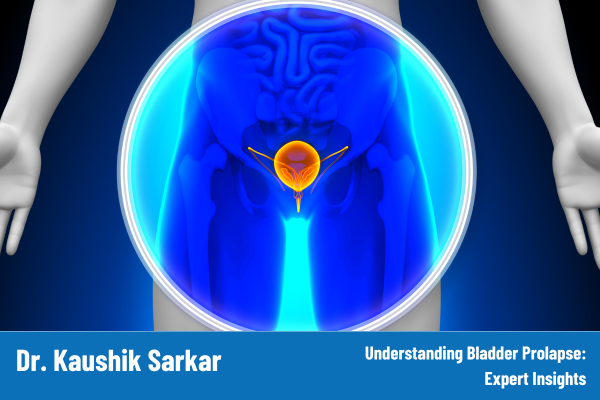Bladder prolapse, also known as a cystocele, is a condition where the bladder bulges into the anterior wall of the vagina due to weakened pelvic support tissues. This condition primarily affects women, particularly those who have had multiple pregnancies, childbirth, or are experiencing menopause. Dr. Kaushik Sarkar, a renowned urologist and uro-oncologist based in South Kolkata, sheds light on this often-underreported condition, its symptoms, diagnosis, and treatment options.
Symptoms and Diagnosis
Bladder prolapse can manifest through a range of symptoms, varying from mild to severe. Common signs include:
- A noticeable bulge or pressure in the vaginal area
- Urinary incontinence or leakage
- Frequent urinary tract infections
- Difficulty starting urination or incomplete bladder emptying
- Pelvic discomfort or pain
Diagnosis typically involves a comprehensive evaluation by a specialist. Dr. Sarkar explains that the diagnostic process often includes a detailed medical history, pelvic examination, and imaging tests such as ultrasound or MRI to assess the extent of the prolapse.
Treatment Options
The management of bladder prolapse depends on the severity of the condition and the patient’s overall health. Dr. Sarkar outlines the following treatment approaches:
- Conservative Management: For mild cases, conservative treatments may include pelvic floor exercises, also known as Kegel exercises, which help strengthen the pelvic muscles. Lifestyle modifications, such as weight management and avoiding heavy lifting, can also be beneficial.
- Pessary Use: A pessary is a device inserted into the vagina to support the bladder and reduce symptoms. Dr. Sarkar emphasizes that this option can be effective for women who prefer non-surgical interventions or are not candidates for surgery.
- Surgical Options: In cases where conservative measures are ineffective, surgical intervention may be necessary. Surgical procedures aim to repair the weakened tissues and restore normal bladder position. Dr. Sarkar specializes in advanced surgical techniques that offer minimal invasiveness and faster recovery times.
- Postoperative Care: After surgery, patients require proper postoperative care to ensure optimal healing and prevent recurrence. This may include physical therapy, follow-up visits, and lifestyle adjustments.
Living with Bladder Prolapse
Bladder prolapse, though challenging, is manageable with the right treatment and lifestyle adjustments. Dr. Sarkar advises patients to seek timely medical advice to prevent the condition from worsening. Early intervention can significantly improve quality of life and reduce complications.
For women experiencing symptoms of bladder prolapse, consulting a specialist like Dr. Kaushik Sarkar can provide a thorough evaluation and a tailored treatment plan. With his expertise, patients in South Kolkata can access advanced care and support to address this condition effectively.

